
Washington 2020 Buck Prospects
Here’s a look at how Washington blacktail, mule deer and whitetail hunters may fare during this fall’s general seasons.
By Andy Walgamott
I’m going to go out on a limb and say that Washington blacktail and mule deer general season harvest this fall – the bulk of which occurs during October’s and November’s rifle hunts – will likely continue to rebound from 2017’s nadir, caused by drought, fires and a bad winter, while whitetail take will be flat.
It’s a fairly sturdy Douglas fir branch I’m on, albeit one licked by flames and fangs, and is strengthened by harvest trends seen the past three seasons, 2019’s posthunt surveys, buck:doe and doe:fawn ratios, district biologists’ takes on their herds, a mild winter, and no antlerless opportunities in the state’s northeast corner for any user groups.
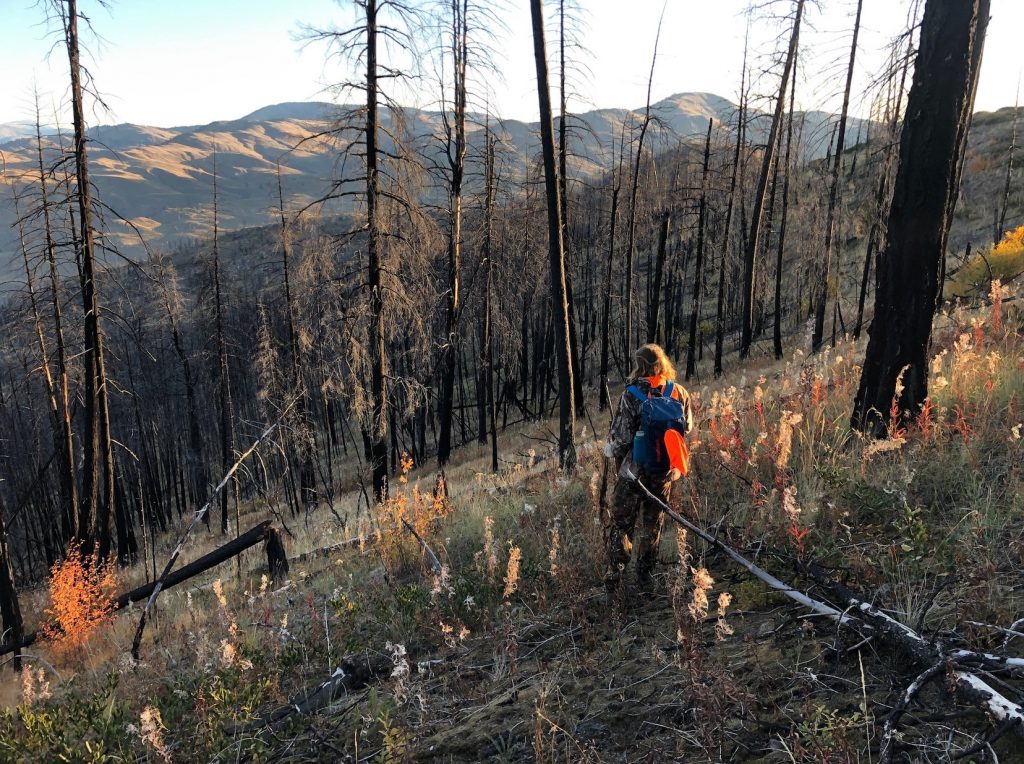
There’s also the relatively late modern firearms opener that could benefit mule deer hunters targeting migratory herds on the eastern slopes of the North Cascades.
But crawling out where this bough becomes more sprig- and twiglike, I wonder about hunter numbers and potential dynamic impacts of more of us afield.

With Covid-19, unemployment is up and outdoor recreation has exploded, so will that result in oranger hillsides in October and November? Will more pumpkins push more deer into more hunters? With more time on our hands, will we stay afield longer, increasing our odds of success?
Or will hangover from recent years’ relatively low harvests, word-of-mouth deer observations, increasing predator concerns and other factors suppress hunter numbers?
What about fire restrictions? Or will an early atmospheric river dampen that concern – and participation?
Questions, questions, questions!
First let’s look at some harder info from recent seasons before launching into the forecasts for this fall.

Last year saw 27,588 deer taken during all of Washington’s general seasons – rifle, bow, muzzleloader – including 11,470 blacktails, 8,590 mule deer and 7,528 whitetails. That’s up from 27,529 in 2018 and 25,914 in 2017, but well below 2015’s whopping 37,573.
It was also the second year in a row that the gray ghosts of Westside forests accounted for a plurality of the state’s harvest, and third out of the last four years. Whitetail kill has cratered due to a combination of bluetongue, epizootic hemorrhagic disease, harsh winters and increasing antlerless restrictions to protect does and rebuild herds. No doubt the Evergreen State’s growing predator guild is also having an impact at some level and researchers are looking into wolf/cougar/etc.-prey relationships in key areas.
Breaking 2019’s take down further, the South Cascades zone was most productive for blacktails with 4,339 bagged, the Columbia Plateau for muleys with 3,330 tagged and Selkirk region for whitetails with 4,683 killed.

Interestingly, the Okanogan Highlands and Blue Mountains compared favorably to the larger Palouse region in terms of whitetail harvest, 717 and 768 to 1,053, as did Puget Sound islands with the North Cascades, 928 to 1,412 blacktails.

NORTHEAST WASHINGTON
General modern firearm buck harvest ticked back up last season in the state’s primary whitetail units north and northwest of Spokane after steep declines following 2015’s high mark.
Riflemen took 3,278 bucks in 2019 compared to 3,067 the year before, and harvest was up or held steady in most units, though it did drop in Huckleberry, the most productive. The flip side is, antlerless deer were off limits for all, and are again this fall.
In their annual hunting prospects, district biologists Annemarie Prince and Ben Turnock report stable buck:doe and fawn:doe ratios in recent years. Longer term, the former ratio has been on a very slow rise through the upper 20s during the 2000s, but the latter has also declined over the same period.
Hunter numbers were down uniformly last year and success rates were below the 20-year average, but Aladdin, Selkirk, 49 Degrees North saw increases in that metric. Riflemen in that trio also needed fewer days to notch a tag than in 2018.
As usual the Huckleberry and 49 Degrees North units were most productive in terms of harvest, producing 1,121 and 725 bucks for riflemen, while days per harvest was lowest in Kellyhill and Douglas at around 15 per notched tag.
As a heads up for down the road, antler-point minimums are again being mulled, this time not just in Huckle and 49 North. Last month comment was being sought on districtwide two-, three or four-point restrictions for everyone except youth, senior and disabled sportsmen.
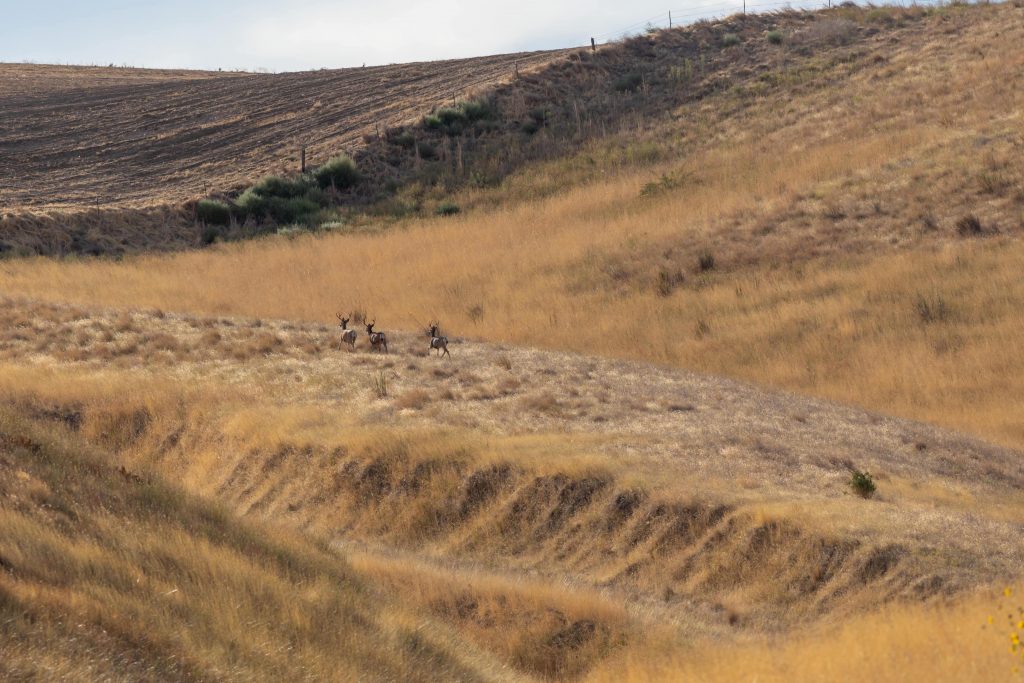
SPOKANE AND PALOUSE
Whitetail are still struggling to recover in units around and south of Spokane to the Snake following disease as well as summer and winter weather issues since 2015, but mule deer herds are near long-term averages, report biologists Michael Atamian and Carrie Lowe. A milder winter and wet spring should have helped flagtails begin to bounce back this year, they say.
Mt. Spokane and the rest of their district, plus some units on the south side of the Snake, host the only general antlerless ops for youth, disabled and seniors this season.
Speaking of Mt. Spokane, it again stood head and shoulders over other units in the district, with a harvest of 1,204 bucks and does last year, while Harrington and Almota hunters needed nine and 11 days to tag out.
BLUE MOUNTAINS AND FOOTHILLS
Late, heavy snows two winters ago that hit fawns hard will likely continue to depress harvest numbers this season, at least on the south and east sides of the Blues where conditions were most fearsome.
“With an average to mild winter over 2019-2020 and the lag time for bucks to become legal three-points, we wouldn’t expect white-tailed deer harvest to significantly improve until the 2021 season, and mule deer harvest by 2022,” write biologists Paul Wik and Mark Vekasy in their synopsis.
They also warn that a big EHD dieoff seen in Oregon south of Walla Walla last year could have had impacts in adjacent Washington units.
Prescott accounted for nearly 29 percent of the district’s overall rifle harvest in 2019, led with a 34 percent success rate and only required a day more per kill than Mayview, nine versus eight. Typically those low figures mean overwhelming private ownership, but Prescott does have a good amount of land enrolled in various access programs, as do other units ringing the Blues and up in the Palouse.
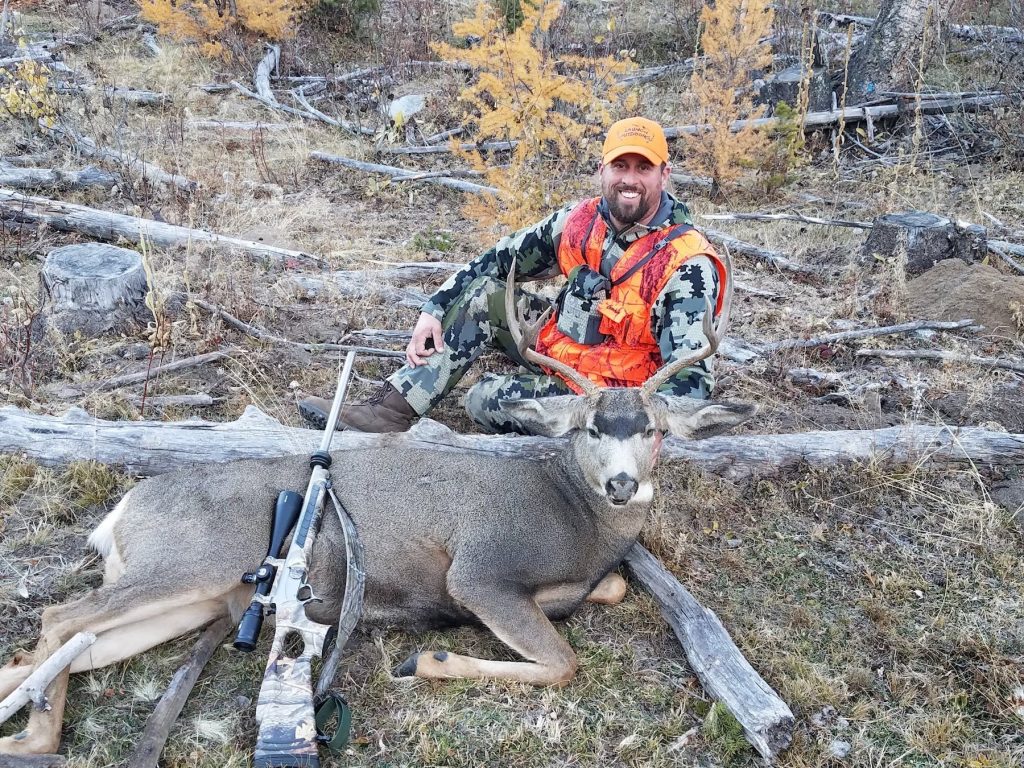
OKANOGAN AND CHELAN COUNTIES
Conditions aren’t fully aligned like they were in 2015, when mule deer hunters enjoyed a phenomenal season in Northcentral Washington, but two things are in their favor. The 11-day general season starts and ends as late as it possibly can for the species in the state, Oct. 17-27, and there are some good signs, at least with the Okanogan herd.
“Improving post-season fawn:doe ratios and higher than average estimated fawn recruitment over the last two years likely means a modest increase in 2.5-year-old buck availability in 2020,” report district biologists Scott Fitkin and Jeff Heinlen. “Similarly, the 2019 postseason buck:doe ratio rose to 22 bucks per 100 does, and with about a third of those being greater than or equal to three points, older age-class buck availability looks decent as well.”
They forecast an uptick in harvest and success rates over last year, with a take close to the five-year average.
Success and days-per-kill rates are nowhere as gaudy as units in aforementioned districts, but they’re not bad in those along either side of the Okanogan River itself. Okanogan East stood out with 29 percent of the district’s bucks last year and represents the best overlap of muley and whitetail range, but Pogue required the fewest days per deer, 14.
There’s less info to gauge the situation in Chelan County, to the south, as biologists were unable to fly the winter range after last hunting season due to weather, but the trend has been in the right direction. Buck:doe numbers rebounded from 18:100 to 23:100 after 2018’s hunt and that may have helped plump 2019’s rifle season harvest up to 593 from the previous year’s 439.
Entiat was most productive with 178 bucks taken, but hunter success and days per kill were better in Manson (19 percent and 20), Mission (18 percent and 22) and Swakane (17 percent and 20).
Throw a nice blanket of snow over the heights in mid- to late October and that could be good for those of us hunting the top end of Chelan and Okanogan’s winter range units.
Well, hope springs eternal anyway.
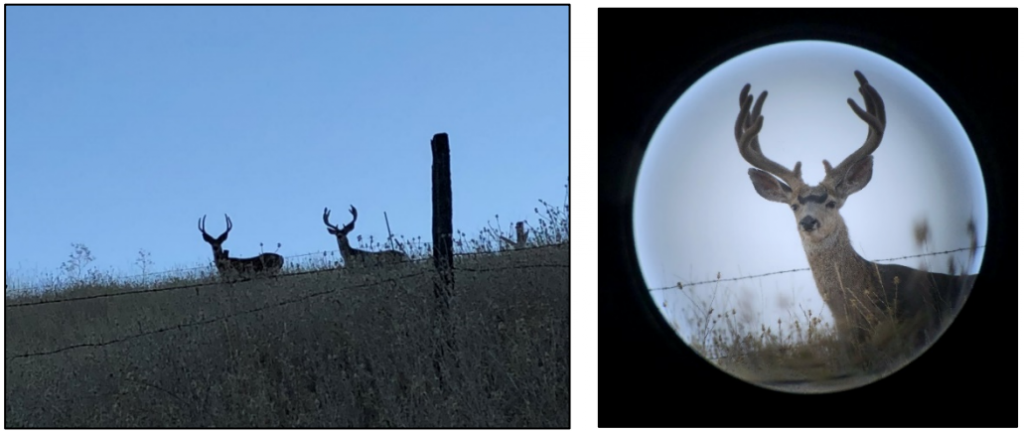
COLUMBIA BASIN
Douglas County looked prime for a good October, thanks to a best-in-the-Columbia-Basin buck:doe ratio of 23:100, well above the goal of 15:100, but it remains to be seen what the 350-square-mile Pearl Hill Fire did to deer distribution. It burned 20 percent of the county, including parts of state wildlife areas in a largely privately owned region.
Before that happened, biologists Emily Jeffreys and Devon Comstock were forecasting “excellent hunting opportunity during general and antlerless permit seasons in these sagebrush and agricultural habitats.”
Ratios elsewhere stood at 22:100 bucks:does in Ritzville and 17:100 in Beezley, where bios Sean Dougherty and Ella Rowan were expecting an average year, and 16:100 in Kahlotus. Fawn numbers ranged from 63: to 74:100 does, the latter figure for Kahlotus and a high mark back through at least 2010, potentially signifying something to watch for next year and the season after.
Big Bend is a fraction of the size of Ritzville, Beezley and Kahlotus, but fared well last year, yielding 128 bucks to riflemen, compared to 264, 215 and 187, respectively. But Ritzville had the best success rate, 38 percent, and days per kill, nine.
SOUTHCENTRAL WASHINGTON
Bios Stefanie Bergh and Carly Wickhem took heart in a bit of an uptick in last year’s harvest in their district’s three mule deer units, saying it was “hopefully an indication of a recovery for these populations.” The “extreme winter” of 2016-17 took a meaty whack out of West and East Klickitat and Grayback, but December surveys showed a “slight increase in the population and recent spring surveys show that fawn survival is back to its historic average.”
“Success rates in fall 2019 increased slightly over recent years, which is another encouraging sign,” Bergh and Wickhem note about all of their units, which line the Columbia Gorge from Vancouver east to Crow Butte. They expect 2,000 bucks to be tagged by general season hunters for a 20 to 25 percent success rate.
East Klick and Battle Ground were neck and neck in terms of rifle success rates last year, 30 and 29 percent, and days per kill, 13 and 14, but Washougal topped all with a harvest of 353, mostly spike and forked horn blacktails.
Yakima and Kittitas Counties also saw a rebound in buck harvest, but that was compared to 2018, when it “hit its lowest levels … since records have been maintained … No major increase is expected for 2020,” reports biologist Jeff Bernatowicz.
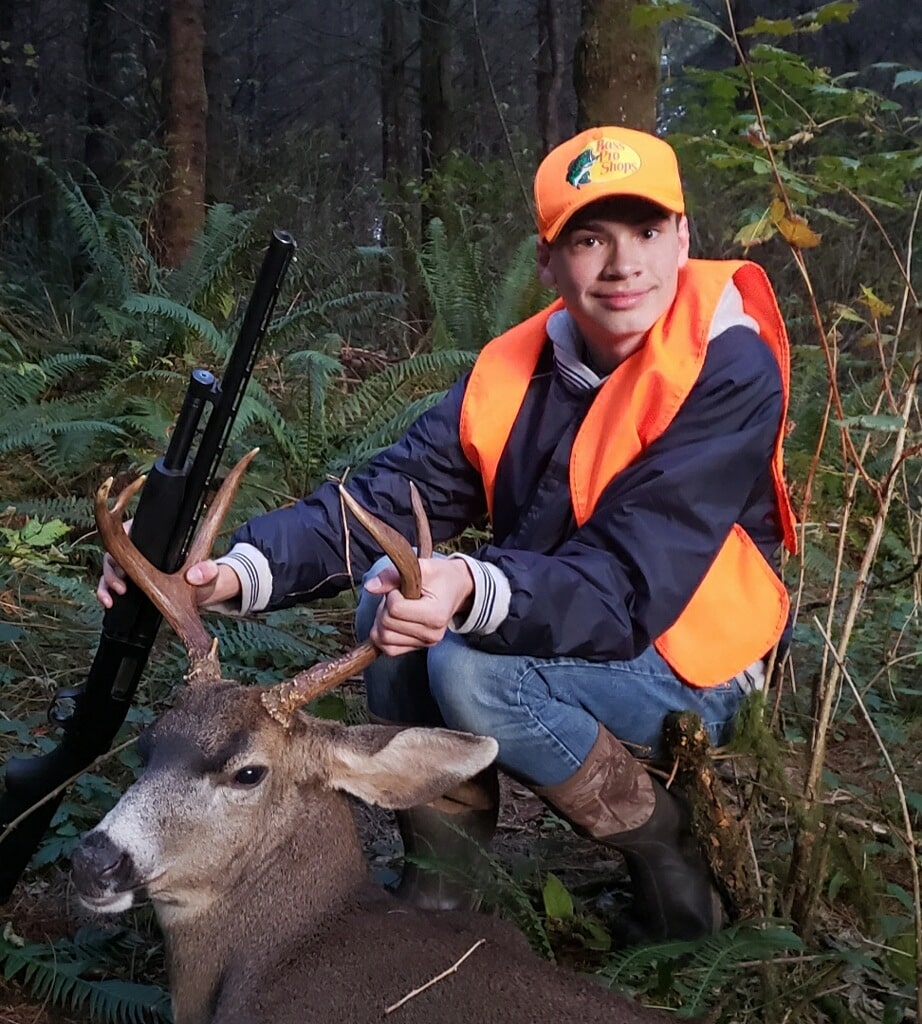
WESTERN WASHINGTON
With such dense habitat, blacktail can’t be monitored like Eastside deer, but biologists Eric Holman and Nicholle Stephens feel numbers in Cowlitz, Lewis and Wahkiakum Counties are “stable to increasing.” With three mild winters in a row following a really bad one in 2016-17, “deer hunting opportunity should again be good in 2020,” they say.
The Willapa Hills have rebounded from a poor 2017 season and if observable harvest trends since 2001 are any indication, it will continue to climb this season. Success percentages are best in Minot Peak, Copalis and Fall River at 37, 33 and 31 percent.
In Pugetropolis, North Sound led all mainland units last year with 315 general-season modern firearms deer, thanks to “quite high local deer densities” (check gun restrictions as the unit represents the settled lowlands). But not far behind was Mason at 302 and Satsop at 300.
In the islands, state hunting managers continue to try and increase access to plentiful though smaller blacktails. Success rates are stratospheric in places – 53 percent for Whidbey hunters who bagged 168 bucks and 34 antlerless deer, taking just eight days apiece during last year’s “rifle” season (the entire island is actually firearms restricted). But so too can be the cost of a ferry trip to and lodging on many of the islands this time of year.
Wherever you go, good luck!
